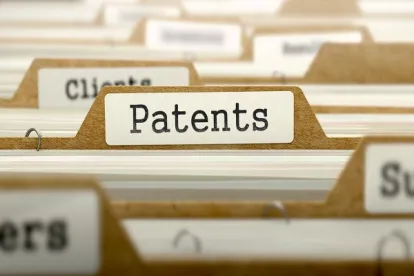My first post on this troubling decision is dated August 3rd. If you have not already, please read it before you read this one. It focuses on the two judge majority opinion, that found that a claim to a method for manufacturing a “propshaft” –that I think is the same thing as an automobile’s driveshaft—modified so that bad vibrations are reduced, is patent ineligible as a natural phenomenon (or perhaps also as an abstract idea).
Judge Moore, one of the few technically versed Fed. Cir. judges – she received an engineering degree from M.I.T.—is well-qualified to dismember the majority’s opinion, and she is not shy in dissent. She identifies three “critical errors of law.” First, she argues that the majority “creates a new test for when claims directed to a natural law despite no natural law being recited in the claims, the Nothing More test.” This test forces the appellate court to “determine whether Hooke’s law and nothing more results in a reduction of two types of vibration in a propshaft”, although nothing in the record supports such a finding. She argues that this test requires the Fed. Cir. to draw scientific conclusions that the parties did not present.
Next, she argues that the majority refuses to consider the effect of the recitation of unconventional claim elements, such as the insertion of a tuned liner into the hollow propshaft so that it acts as both a “tuned resistive absorber” and a “tuned reactive absorber”.
Thirdly she argues that “the majority has imbued s. 101 with a new superpower—enablement on steroids. The majority’s blended 101/112 analysis expands s. 101, converts factual issues into legal ones and is certain to cause confusion for future cases.” (Many commentators have previously identified the danger inherent in “112 creep” into s. 101 analyses. In my view, this is why the evaluation of a claim for eligibility under s. 101 should not require patentee to prove that the claimed invention represents an improvement over the prior art. The s. 101 test should simply ask, “Is the invention novel—different not better—is the invention useful—and is the invention one of the types of subject matter—in this case a machine or a manufacture, that the statute recites.”)
But I digress, and Judge Moore can turn a phrase: “The majority claims this is a narrow decision—I think not. This case turns the gatekeeper into a barricade. Unstated natural laws lurk in the operation of every claimed invention. Given the majority’s application of this new test, most patent claims will not be open to a s. 101 challenge for being directed to a natural law or phenomenon. [Eds. note: This is just what happened to medical diagnostic claims after the Fed. Cir. created the rule that the recognition of the utility of a naturally occurring correlation cannot provide the inventive step required by step 2 of the Alice/Mayo test. “If A, the B” claims already had be held to fail step 1 of the test, as simply recitations of natural phenomena.]
Judge Moore continues with a page-long summary of the opinion of amici summarizing the “shock waves” the decision sent through the patent community., including Law Profs. Br. At 4: “This is a specific, practical application of the laws of thermodynamics in an industrial process—an innovative process deemed patentable by the courts since the nineteenth century” [or just go read Diehr.] Moore continues: “ These claims do not preempt use of a natural law and the majority significantly broadens the directed to test to find otherwise.”
She continues too explain: “Claim 22 does not recite a natural law, about that there can be no doubt. Hooke’s law is not mentioned by name or formula anywhere in the claims, specification or prosecution history. The majority overcomes this defect by articulating a new test (the Nothing More test) for when a claim is directed to a natural law despite not reciting one: ‘This holding as to step 1 of Alice extends only where, as here, a claim on its face clearly invokes a natural law, and nothing more, to achieve the claimed result.’”
Moore retorts: “Every mechanical invention requires use and application of the laws of physics. It cannot suffice to hold a claim directed to a natural law simply because compliance with a natural law is required to practice the method. Section 101 is monstrous enough. It cannot be that use of an unclaimed natural law in the performance of an industrial process is sufficient to hold that claim directed to a natural law…’The specification invokes Hooke’s law no more than it does the law of gravity.’” [Citing IPO amicus brief].
The post is longer than I thought it would be, and I am only at page 10 of the dissent, but I think you get the thrust of Judge Moore’s concerns. Since she is an engineer, I might expect, and must point out, her misquoting “The Raven” by E.A. Poe: “The majority’s Nothing More test, like the great American work, The Raven, from which it is surely borrowing, will as in the poem, lead to insanity.” In the poem, the Raven says “Nevermore”, which means “not again in the future”. Come to think of it, American Axel may lead us to a future that comprises a lot fewer patents than we might have expected a few weeks ago.


 />i
/>i

